A reader’s response to A Biography of Shenzhen
Writer: Han Wangxi | Editor: Vincent Lin | From: | Updated: 2020-08-11
With focus ranging from Chang’an to Rome, and from the Hangzhou Bay to the Mediterranean, the “Biographies of 100 Cities along the Silk Road” series compiled and published by New Star Press is a rare gem. Hu Yeqiu’s A Biography of Shenzhen is an inspirational triumph like a “brocade sent through a cloud” as a Chinese saying goes. His humanistic stories of Shenzhen spun profoundly and with artistic taste lingered long in my mind.
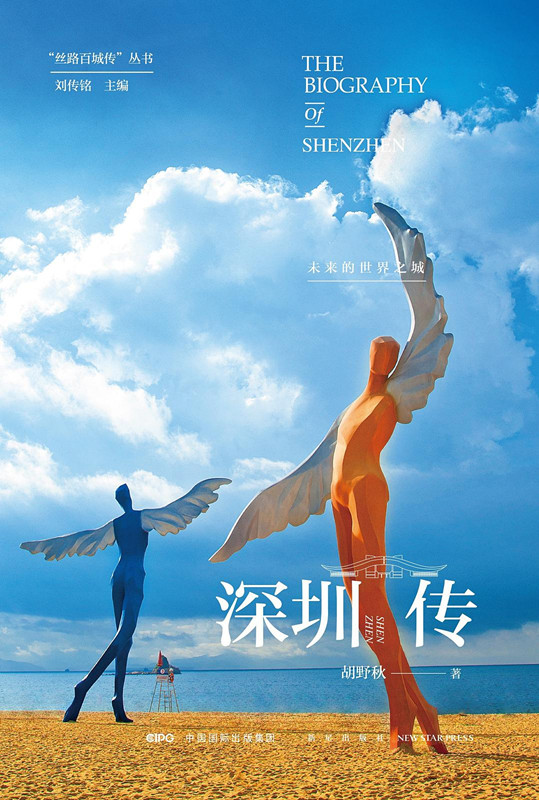
In The Spirit of Cities: Why the Identity of a City Matters in a Global Age, Daniel A. Bell and Avner de-Shalit argue: “A truly great city can endow people dignity and a better life.” Every city has unique character. The subtitle of A Biography of Shenzhen is “Tomorrow’s World City,” and I like this phrase because it captures the glorious dreams of the city. It hearkens to its pulse and impulses pumping day and night. This city has been around for only 40 years. As Hu said, Shenzhen is the most difficult city to define. Its temperament is romantic, unrestrained, singing while tearful. Creativity is her constant tone. If you must label it, Shenzhen is a city of dreams, and Shenzhen people are a group of dreamers. For 40 years, profound changes have taken place in the city, but the annual ring marks are there.
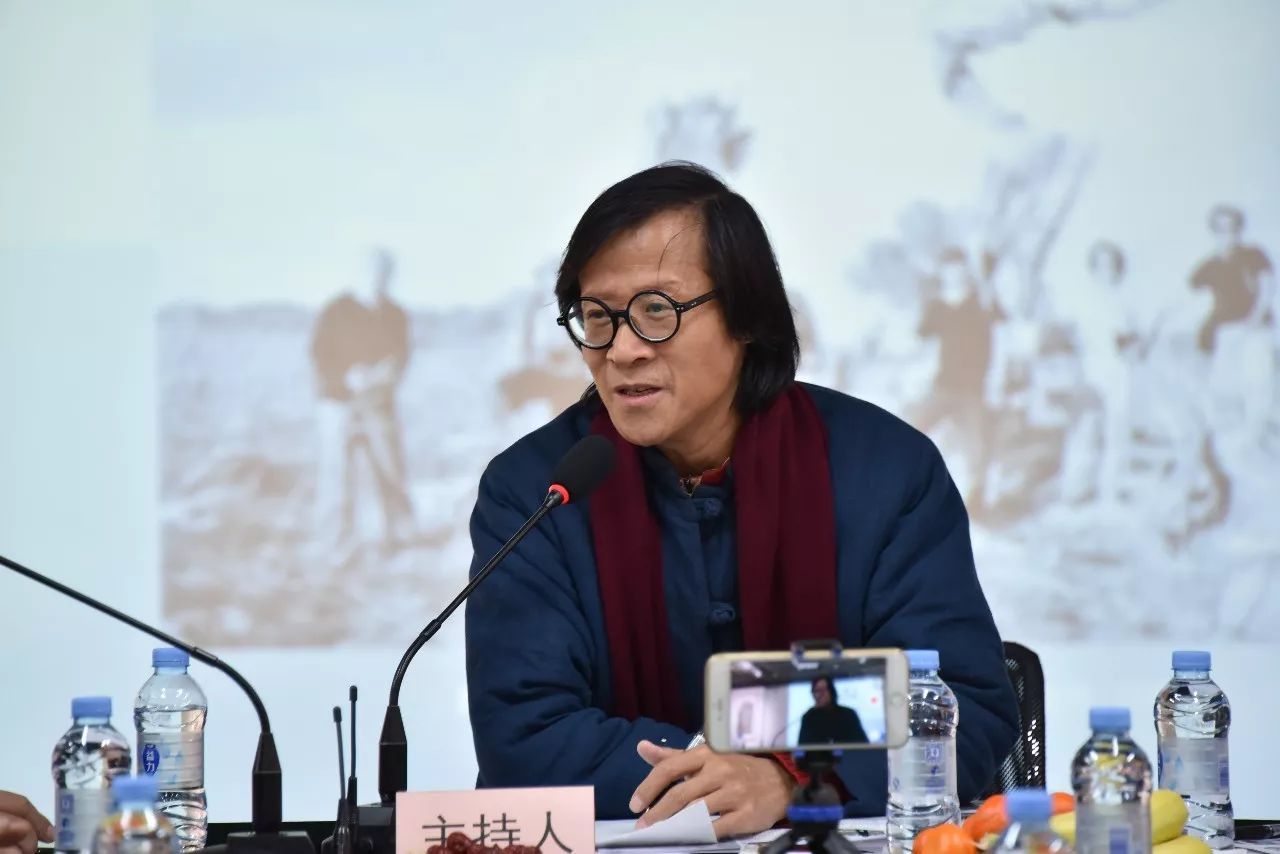
Hu Yeqiu. Photo from Shenzhen Art Museum
Hu helps us identify the increasingly blurred annual ring marks through A Biography of Shenzhen. What can we take from these slices of life? What meaning can be found in the metabolism of a city? We see a clear history of urban changes, the story of twin cities of Shenzhen and Hong Kong, the legendary heroes who changed the city, the infiltration of special zone culture, and the humanity and geography, mountains and rivers, streets and dialects... Everything is driven by the passage of time, liberation of the mind, refinement of taste and growth of the soul.
Shenzhen has rocketed from a barren and desolated land to a modern and international metropolis, and its inhabitants are building tomorrow’s global cultural capital on this formerly culturally barren land. Better than lectures on geography and civic building, the book covers more important topics like people’s hearts, minds, and ideas. I especially appreciate the author’s perception of Shenzhen culture. Hu and I arrived in Shenzhen at about the same time. We have special feelings for Shenzhen, and we were both stung by the phrase “cultural desert.” What indeed is the Shenzhen culture and the Shenzhen school? How could a city be constructed without the construction of culture?
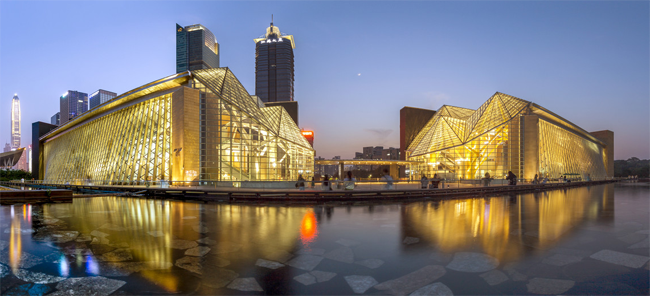
Shenzhen Concert Hall (R) and Shenzhen Library. File photos
Plowing with the heart ensures a good harvest. Our smiles and tears, requests and responses, confusion and growth are engraved in our hearts. A paragraph in the book reads: “Shenzhen Concert Hall and Shenzhen Library are symmetrically conjoined buildings. Most commendable are the relatively high glass spires on both sides. Under the spires, the concert hall’s ‘Golden Tree Hall’ and the library’s ‘Silver Tree Hall’ buildings have become landmarks and seeming beacons for the arrival of the “Gold and Silver Age” of Shenzhen culture. Although they are only two ‘trees,’ they are clearly forerunners of a cultural forest.”
Readers may wonder what drove such a change from a reputed “cultural desert” to a teeming “cultural forest.” Hu’s book records the easily neglected history supporting the high-rise buildings. It looks at unique humanity, the makeup of human spirit, and the power of conceptuality. The spiritual heritage of the city runs through our blood and moves forward from generation to generation. A Biography of Shenzhen documents and comments on the changes and developments of an era.
We grew up with Shenzhen over the years. We are not used to exaggeration but prefer simple and unadorned narrative. I have lived in Shenzhen for almost 30 years. The stories, the characters, the customs, the dialects, the streets, and every name that Hu described made my soul tremble. He excels at connecting seemingly irrelevant details of life. The details are like pearls on a string naturally threading together a story without a plot.
These stories carry the imprint of time. Like a tree, we can analyze the city by its annual rings. Old pictures that seem a world away show how people expressed themselves and existed in a different era and shine light on how their experience eventually spawned real fortune. People and cities are both products of time. The story of Shenzhen is a profound inspiration left by time. Hu Yeqiu has left us with memories of the city with his words and through light and shadow. His narration is loyal to his eyes and heart, and he is loyal to every day and night he spends with the city.
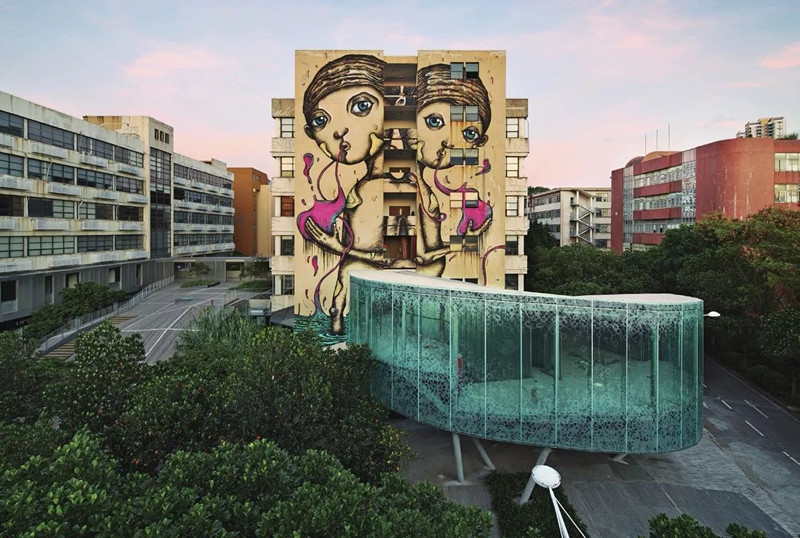
A scene at OCT-LOFT.
I was once in charge of international communication for Shenzhen. I tried my best to tell the world about Shenzhen and showcase a city that is open, tolerant, innovative, charming, and brimming with vitality and has the potential to become the cultural capital of Asia and even the world. I hope that this city develops the music, art, design, opera, literature, poetry, film, and every other element to become the cultural capital of the world. To live in such a city would be endlessly fascinating. I dream of Shenzhen one day becoming the cultural capital of the planet.
Shenzhen has been designated a UNESCO City of Design. In 2016, we introduced Shenzhen design to Lithuania. Kaunas in Lithuania is another UNESCO City of Design and has been honored as the “European Capital of Culture” for its cultural and artistic achievements. That experience gave me more confidence and expectations for Shenzhen.
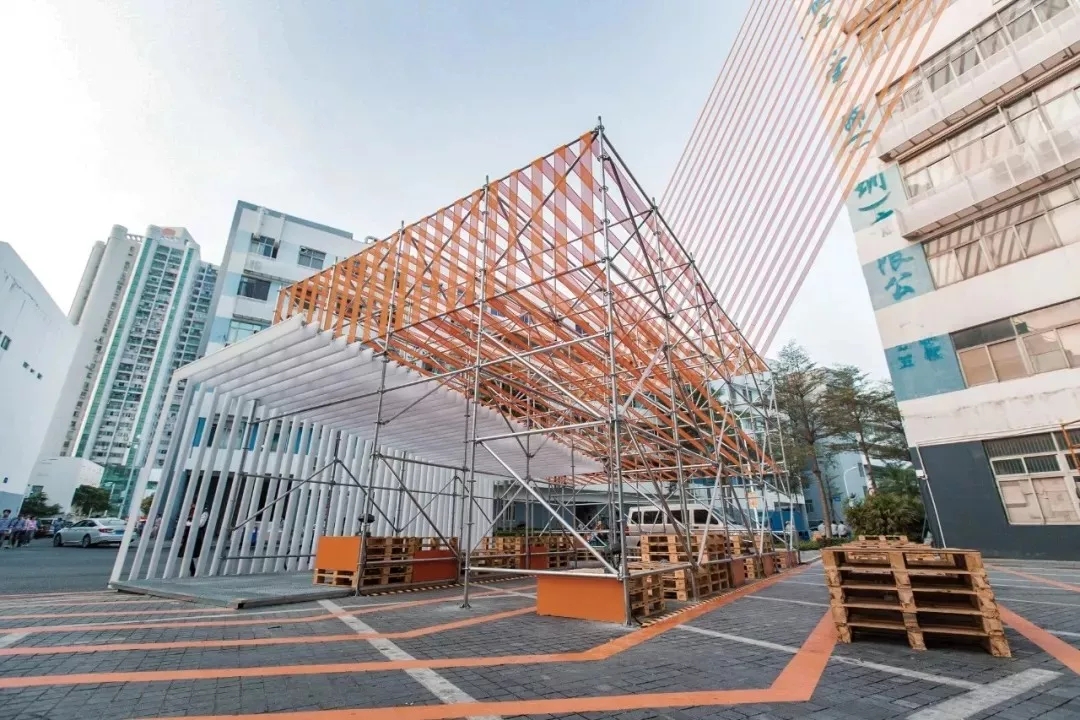
An exhibit in one of the sub-venues in the 2019 Bi-City Biennale of UrbanismArchitecture (Shenzhen) (UABB). Photo by UABB Shenzhen.
Becoming a hotbed of blistering culture and pioneering creativity is the dream of this city. A Biography of Shenzhen devoted many pages to portraying the dreams of the city and described it as “a city that rides dreams like a horse.” Every day in Shenzhen is new. No matter how hard you try, the shells of dreams are endless. The city keeps the people moving and they keep things endlessly exciting.
I hope many people read this book and gain understanding of this future world city. This book is a good first step.
(Han Wangxi is a PhD of Philosophy at Renmin University of China and a visiting scholar at the Chinese University of Hong Kong.)